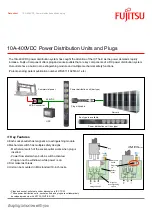
Janu
ary 201
9
Legrand PDU User Guide 419
The command looks like the following when it includes all options:
diag>
ping <host> count <number1> size <number2> timeout <number3>
Tracing the Route
This command syntax traces the network route between your Legrand PDU and a network host.
diag>
traceroute <host>
Variables:
<host> is the name or IP address of the host you want to trace.
Example - Ping Command
The following command checks the network connectivity of the host 192.168.84.222 by sending the ICMP
ECHO_REQUEST message to the host for 5 times.
diag>
ping 192.168.84.222 count 5
Retrieving Previous Commands
If you would like to retrieve any command that was previously typed in the same connection session, press
the Up arrow ( ) on the keyboard several times until the desired command is displayed.
Automatically Completing a Command
A CLI command always consists of several words. You can easily enter a command by typing first word(s) or
letter(s) and then pressing Tab or Ctrl+i instead of typing the whole command word by word.
To have a command completed automatically:
1. Type initial letters or words of the desired command. Make sure the letters or words you typed are
unique so that the CLI can identify the command you want.
2. Press Tab or Ctrl+i until the complete command appears.
3. If there are more than one possible commands, a list of these commands is displayed. Then type the full
command.
Examples:
Example 1 (only one possible command):
a. Type the first word and the first letter of the second word of the "
reset factorydefaults
"
command -- that is,
reset f
.
b. Then press Tab or Ctrl+i to complete the second word.
Example 2 (only one possible command):
a. Type the first word and initial letters of the second word of the "
security
enforceHttpsForWebAccess
" command -- that is,
security enf
.
b. Then press Tab or Ctrl+i to complete the second word.
















































